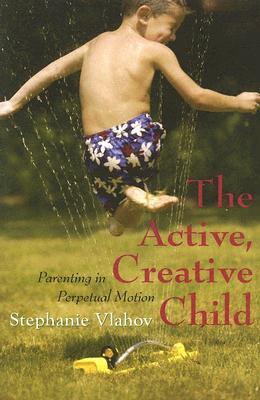Title: The Active, Creative Child: Parenting in Perpetual Motion
Author: Stephanie Vlahov
Publisher: Hohm Press
ISBN: 9781890772475
Pages: 102, Paperback
Genre: Parenting
Reviewed by: Beth Adams, Pacific Book Review
Book Review
When our daughter was born, I had always thought there was one thing missing; instructions. Stephanie Vlahov provides the most focused insights on how to cope with exceptionally spirited children in her book The Active, Creative Child: Parenting in Perpetual Motion.Every child is unique, like each snowflake, but like snowflakes they have more in common than differences. When an icicle appears, then you know you’re dealing with something which sticks out from the crowd, like an active, creative child; and that’s only the start. Stephanie writes mostly about her son, Alex, from the moment born having energy noticeably higher than others and thus realizing he would require exceptional parental channeling. Her book is all about the events, stories, observations and the experience she learned firsthand by raising her son throughout his formative years from a baby, to a toddler, and into his adolescence.
Vlahov begins with 8 observations of who is the active child? She categorizes the active child: is a live wire from the get-go; that may not like to sleep; is willful and spirited; may be misdiagnosed with Attention Deficit Disorder (ADD); continually gets “into things;” and is different, extraverted and introspectively creative. Each observation is associated with a “bullet point” done graphically as a push-pin note, along with a related story about her son and how she came to realize each of these characteristics were unique to other “active children.” Next she lists 10 helpful hints on how to deal (or in some cases, cope) with the active child. These generalizations are inspiring and fully understandable to those encountering such challenges. I especially thought “Taking care of yourself” was a clever hint as we all need to focus on our strength and health in order to “be there” for our youngsters.
Stephanie Vlahov then changes the technique of her writing from her definition section and begins a more classical explanation of methods and suggestions on how best to deal with such highly spirited and awesomely sensitive children. In the remainder of her book she deals with issues of school, friends, and other family members. With each she demonstrates a skillful, conversational and non-pontificating way of explaining her wisdom gained from her experiences. Her book is further embellished with a section of very insightful suggested reading, plus an index for reference.
The audience for her book is quite specific. I think there exists a large group, like me (having our daughter now half way into her 3 year old splendor) and other parents with active children between newborn and 10 years old. I believe the cover art shows a fraction of a second of the life of Stephanie Vlahov’s son, defying gravity and seeking stimulation with a facial expression of satisfaction – a truly lovely moment; one the parent of an active child knows all so well. For those who have or know of ones with active children, this book is what was missing from the baby bag when leaving the hospital after delivery – the operator manual.


